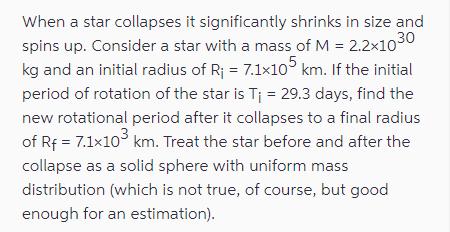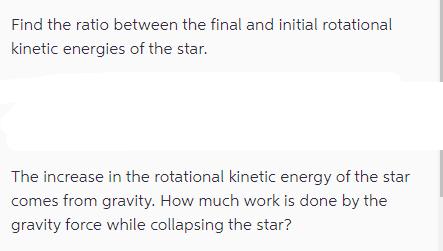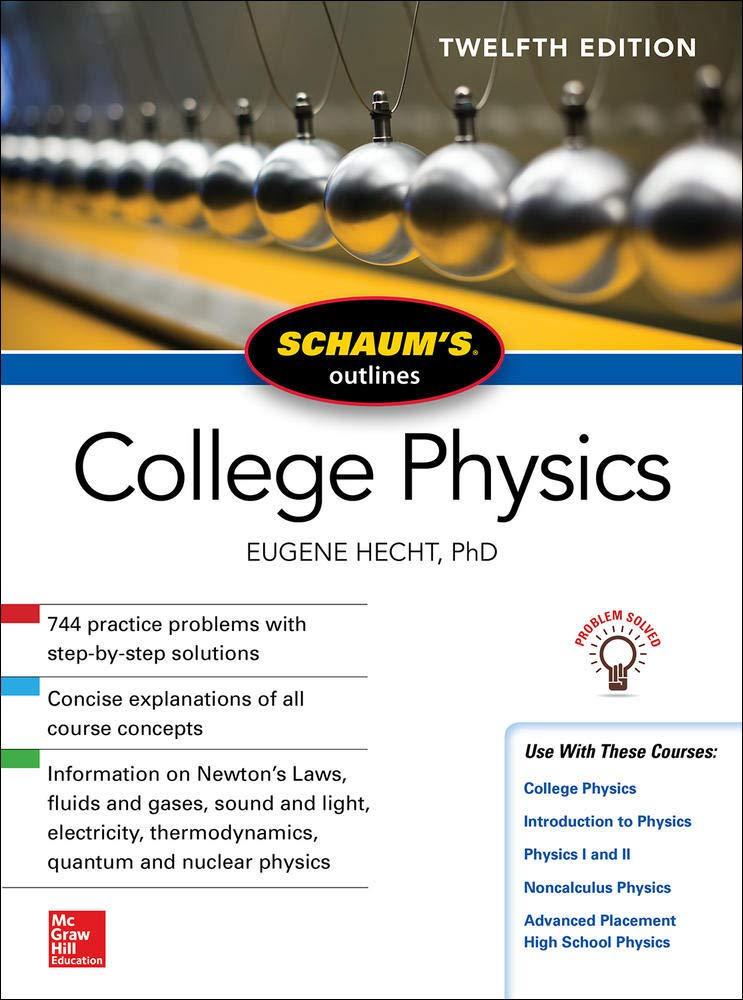Answered step by step
Verified Expert Solution
Question
1 Approved Answer
When a star collapses it significantly shrinks in size and spins up. Consider a star with a mass of M = 2.2x1030 kg and


When a star collapses it significantly shrinks in size and spins up. Consider a star with a mass of M = 2.2x1030 kg and an initial radius of R = 7.1x105 km. If the initial period of rotation of the star is T = 29.3 days, find the new rotational period after it collapses to a final radius of Rf = 7.1x10 km. Treat the star before and after the collapse as a solid sphere with uniform mass distribution (which is not true, of course, but good enough for an estimation). Find the ratio between the final and initial rotational kinetic energies of the star. The increase in the rotational kinetic energy of the star comes from gravity. How much work is done by the gravity force while collapsing the star?
Step by Step Solution
★★★★★
3.52 Rating (155 Votes )
There are 3 Steps involved in it
Step: 1
Solution To find the new rotational period of the star we can use the conservation of angular momentum which states that the product of the moment of ...
Get Instant Access to Expert-Tailored Solutions
See step-by-step solutions with expert insights and AI powered tools for academic success
Step: 2

Step: 3

Ace Your Homework with AI
Get the answers you need in no time with our AI-driven, step-by-step assistance
Get Started


